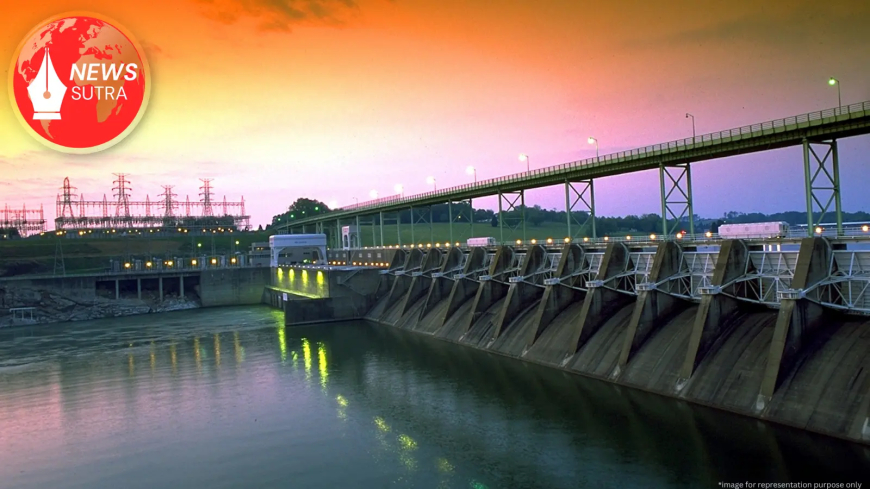China’s $167 Billion Tibet Mega‑Dam: A Clean‑Energy Leap Shadowed by Environmental and Geopolitical Alarm
China has begun work on a US $167 billion hydropower project in Tibet on the Yarlung Zangbo River, promising clean energy but sparking environmental, seismic and geopolitical concerns.

China officially broke ground on what will become the world’s largest hydropower project—the Medog Hydropower Station on the lower Yarlung Zangbo River in Tibet, with an estimated investment of approximately US $167 billion. Despite its promise of generating 300 billion kilowatt-hours of clean electricity annually, geopolitical frictions and ecological concerns are now center stage. The Express Tribune+15Wikipedia+15Radio Free Asia+15
Monumental Scale and Clean Power Promise
During the July 19 ceremony in Nyingchi, Premier Li Qiang praised it as the “project of the century,” emphasizing its alignment with China’s carbon neutrality ambitions. The mega-dam complex spans five cascade stations and is set to rival (and in some ways surpass) the Three Gorges Dam in capacity. South China Morning Post+8Reuters+8Wikipedia+8
China forecasts the facility to start operations in the early 2030s and provide energy both locally in Tibet and via transmission lines for eastern and southern provinces. WikipediaReuters
Socio‑Economic and Strategic Significance
Backers argue the megaproject will stimulate economic growth in Tibet—a historically underdeveloped region—and support the national infrastructure sector. Stocks tied to construction, tunnel engineering, and materials surged as markets viewed the dam as a major government stimulus. Reuters+5Reuters+5Reddit+5
The project is being managed out of the newly formed China Yajiang Group, a state enterprise created expressly for overseeing this development. Reddit+5Wikipedia+5Reuters+5
A Geological Tightrope: Seismic and Environmental Challenges
The planned dam site lies in one of Earth’s deepest canyons—the famed “Great Bend”—where the Yarlung Zangbo drops some 2,000 meters over just 50 kilometers. Such dramatic topography offers massive hydropower potential, but also tremendous geological risk. Business Today+15Reuters+15The Express Tribune+15
Critics warn that construction in this seismically active zone, intersected by the Indian and Eurasian tectonic plates, heightens the risk of earthquakes and landslides. Phayul+1The Hill+1
Ecosystem Threats and Displacement Worries
Independent environmental groups—including the International Campaign for Tibet and Tibet Rights Collective—have raised alarm over irreversible ecological damage in a globally recognized biodiversity hotspot. Reddit+8Tibet Rights Collective+8Reuters+8
Concerns include habitat disruption, disruption of sediment flows, threats to endemic species, and cultural displacement of Tibetan communities. While China claims minimal impact, it has yet to disclose details on relocation or mitigation strategies. Tibet Rights CollectiveRadio Free AsiaThe Express Tribune
Downstream Consequences: Implications for India and Bangladesh
Once the Yarlung Zangbo flows into India’s Arunachal Pradesh as the Brahmaputra—and further into Bangladesh as the Jamuna—downstream nations face significant risk. Financial Times+15Wikipedia+15Reuters+15
Indian officials warn of a “ticking water bomb,” fearing the dam could reduce water flow to Arunachal, Assam, and Bangladesh—impacting agriculture, fisheries, and drinking water access. Flash floods triggered by sudden water releases also loom large. Next IAS+5India Today+5The Economic Times+5
New Delhi has requested greater transparency and data-sharing, though Beijing insists the dam will have “no negative impact” on lower riparian countries. Tibet Rights Collective+8India Today+8Anadolu Ajansı+8
Regional Politics and Diplomatic Friction
China’s unilateral decision to begin construction—including the formation of the China Yajiang Group the same day as the groundbreaking—is seen by analysts as an assertive move in transboundary water politics. India Today+6Wikipedia+6Reuters+6
Diplomatic channels remain tense between China and India, with Indian officials voicing concerns over Beijing’s upstream control. Bangladesh has also raised alarm over potential downstream impacts. Without a robust regional water-sharing framework, this project risks inflaming longstanding boundary disputes. www.ndtv.com+2Anadolu Ajansı+2The Times of India+2
Comparing Scale: A New Three Gorges Moment?
The new dam's projected energy output—300 billion kWh per year—totals nearly three times that of China’s Three Gorges project, once the world’s largest hydropower station. Yet, critics note that the displacement seen at Three Gorges (around 1.4 million people) may foreshadow similar social upheaval, though Tibet’s lower population density might limit relocations. Reuters+3Wikipedia+3Radio Free Asia+3
Future Prospects and Environmental Safeguards
Though still in its early phase, the dam is expected to take at least a decade to build and enter commercial operation in the early 2030s. Chinese officials stress ecological conservation measures will be integral to the project’s implementation. Reuters
However, campaigners argue for independent environmental assessments, seismic risk studies, and downstream data-sharing mechanisms involving India and Bangladesh. Critics contend that without transparency and multilateral oversight, environmental assurances remain unconvincing. Tibet Rights CollectiveNext IASAnadolu Ajansı
Balancing Clean Energy and Ecological Risk: A Global Dilemma
The Medog station represents both China’s drive toward renewable energy dominance and the increasing geopolitical complexity of transboundary water infrastructure. As Asia's rivers originate atop the Tibetan plateau, damming them for clean power raises critical questions about climate strategy, economic development, and regional cooperation.
Will the dam bring affordable clean power to Tibet and bolster Beijing’s green credentials—or will the ecological and diplomatic costs outweigh the benefits?



















































